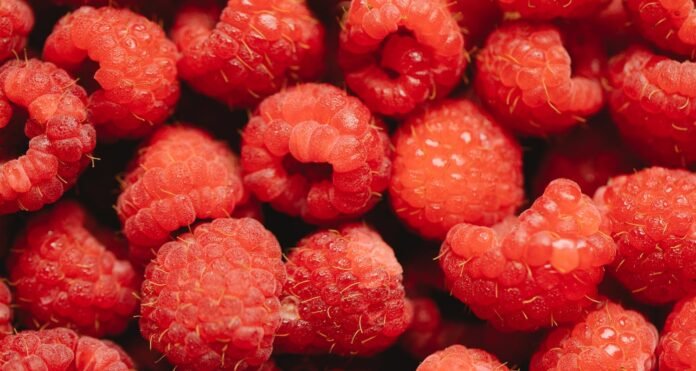Many people who are interested in improving their health have opted to purchase a juicer and have reaped the benefits of juicing. Juicing fruits and vegetables offers many advantages, such as greater nutritional absorption and a more efficient way of consuming the daily 6-8 fruits and veggies that many health experts recommend.
Be aware that wheat-grass is actually gluten free so if you know someone or if you suffer from a gluten intolerance you are free to use wheat grass in your juicing. The benefits from wheat grass are incredible so give it a shot and start incorporating it into your juicing endeavors.
Store all your fruits and vegetables in the refrigerator, especially in the summertime. Juicing depends on fresh produce and leaving them out starts the process of decay more quickly. Keep your produce nice and cool until you eat it so that you can preserve as many vitamins as you can.
Pay close attention to which vegetables and fruits your juicer recommends. There are some fruits and vegetables that do not lend themselves well to juicing. Bananas are a great example of this, as they tend to thicken a mixture when added, which is why they are used in smoothies regularly. Blend these types of produce, as opposed to juicing, for best results.
Get adventurous with your juicing ingredients! Why not try grapefruit or add in a little ginger for some zip! Other items to try are celery, parsley, beets, bell peppers, and leafy greens! You never know what you might end up liking.
There are a million-and-one recipes of items to include in your juicer. You can try a combination like apple with carrot and ginger, or celery and pear. My favorites are apple with lemon and pear, apple with cinnamon and honey, and, my daughter’s favorite, banana with mango and orange. Try new ideas to find your own favorites!
If you don’t have time to juice in the morning, you can make juice on the weekend and drink it throughout the week. The truth is that the vitamins and other nutrients in the drink will break up as time passes, but it’s better to drink homemade juice, than nothing at all!
Juicing is a great way to drink all the nutrients you need for the day, but you also have to be conscious of the amount of sugars you’re taking in. If you’re having a drink with a lot of fruit or high-glycemic vegetables, drink less than you would if it were mostly low-glycemic items.
Fats are still important while juicing. Nuts and seeds contain not only necessary fats but proteins as well. Blending nuts and seeds with your juices will give the juice extra protein, necessary amino acids which help the immune system and the brain and the good types of fat your body needs.
If you are going to store some of your juice for an extended period of time, make sure to add a few drops of lemon juice to it. This will keep the juice from turning color and preserve it while you wait to drink it. The more juice you save, the more lemon you should add.
To lose weight quickly but healthfully, try juicing. Simply replace one to two meals per day with fresh green juice. There are countless recipes available online, but you can make your own by mixing a green leafy vegetable with one or two fruits. You will be getting more vitamins and minerals than the average American, but fewer calories.
Are you gluten intolerant? Anyone with celiac disease will love juicing as it’s a healthy way to have a treat in your diet. You can even include wheatgrass and it’s nutritional benefits as gluten is only found in the seed of the plant, not the stem or grass leaves. Enjoy!
When it comes to juicing, one thing that you want to keep in mind is the fact that the type of juicer that you will want to avoid are the centrifugal juicers. Usually these are cheaper but end up either not being able to extract certain juices or not being able to retain nutrients from other ingredients.
Vegetable juice contains very few calories, no fat (unless you add dairy), little sugar (unless you add a sweetener, including fruit), and lots of fiber. It will taste wonderful and provide you with all the nutrients and vitamins needed to fulfill your daily required intake. It’s also a ton of fun to make!
Wonder why your skin is turning a bit yellow now that you’ve started juicing? Don’t worry, you aren’t developing jaundice! Carrot juice can lend the skin a slight orange tint which will give you a sunny glow, attesting to your new healthy lifestyle. It’s not a horrible skin condition after all!
If you like a really thick juice, try using softer fruits to make nectar! Apricots, peaches, pears, and strawberries are all excellent choices. You can add banana to make it an even smoother treat, but put it in the blender first or mash it and then add it to your juicer so that your motor doesn’t end up wearing out.
If you want to embark on a juice fast, keep the following tips in mind to ensure you do it safely. Drink at least 32 to 64 ounces of juice a day to keep your energy levels up so you won’t feel sluggish. Drink water in between juices, and dilute the juice by two-thirds at “meal” times. ONLY use organic produce while fasting so you can include the skin.
Juicing your fruits and vegetables is a quick and easy way to get your daily recommended doses. If it tastes good, we’re more likely to do it, and there are many delicious and nutritious juicing recipes available to you. So for a satisfying and good-tasting way to improve your overall health, consider juicing.

